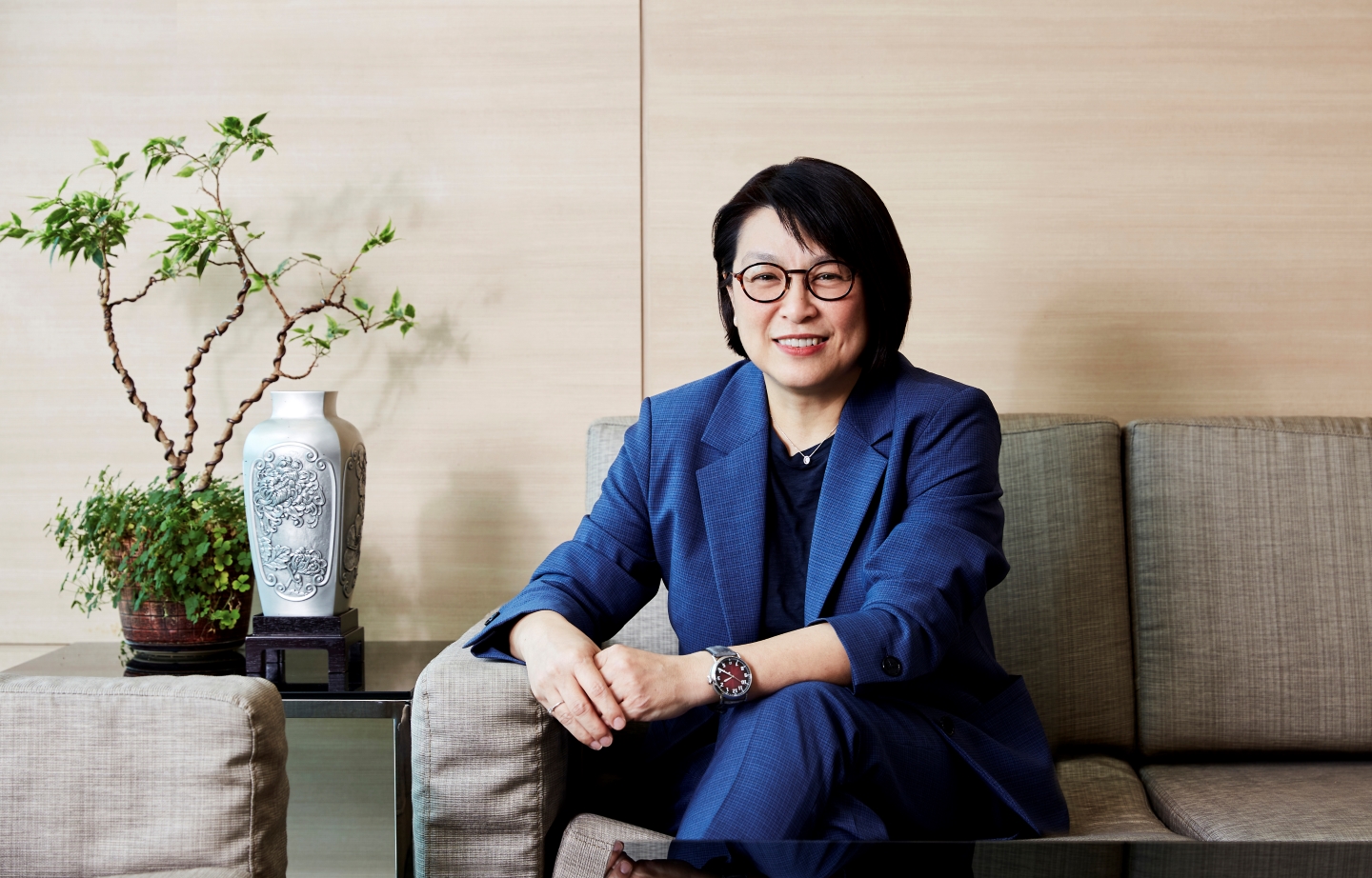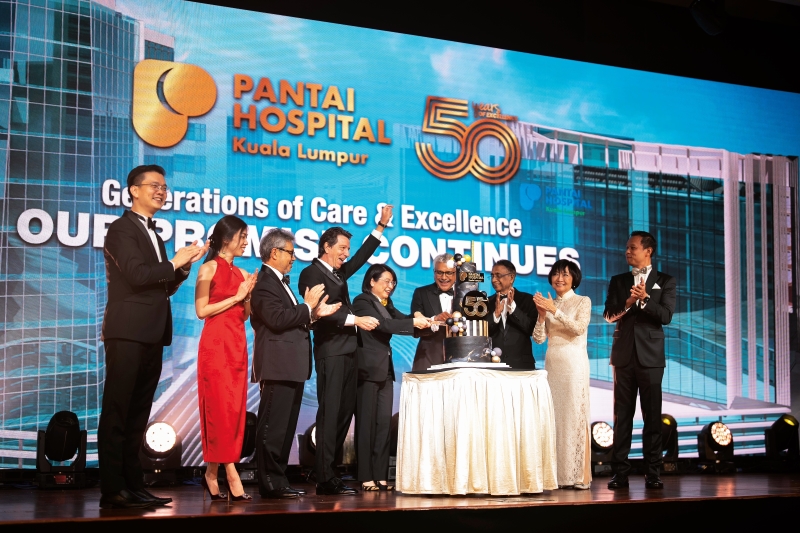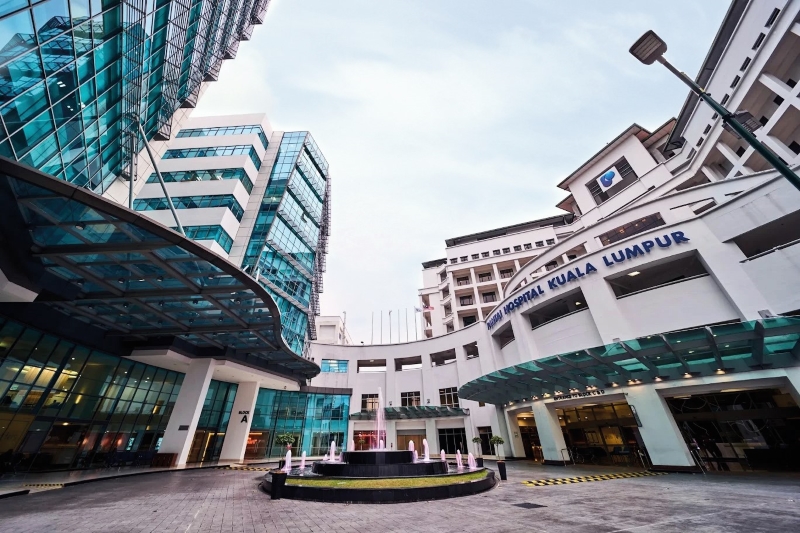
Lam first joined the group as an administration manager back in 2006 (Photo: SooPhye)
At a crossroads after five years as a company secretary, Erica Lam wondered how far she wanted to go, what she would do if she could change course and what companies or industries would be ideal for her. Healthcare was far from her mind because, as she told a hospital that asked if she would like to join them, “I’m a desk-bound person and I don’t know how to run a hospital”.
To her surprise, they said that was not vital and threw her a question instead: “Have you ever been a patient?” No, she told them. “Have you ever visited someone in hospital or had a family member admitted to one?” She replied “yes” to both and was surprised when informed that she would fit the job because they were looking for someone who could relate to a person in need of care, a member of the family or a friend visiting the patient.
That was how the CEO of Pantai Hospital Kuala Lumpur (PHKL) first joined the group as an administration manager, back in 2006.
“It’s interesting how healthcare is relatable to everybody. In our lifetime, we will definitely visit the hospital, have family who get admitted or perhaps, unfortunately, become patients ourselves. The role I was given then required me to see things from these perspectives. And once in the job, I couldn’t get out. I just fell in love with it because I found a direct connection to patient care in every little thing I did at the hospital,” says Lam.
Placed in charge of non-clinical operations, she dealt with a wide range of tasks, including security, installing Astro for patients’ entertainment, housekeeping and laundry — basic, non-sexy things like bedsheets and patient gowns. She quickly realised that whatever she did affected the patients’ well-being. “As company secretary, my contribution was not so obvious. Whereas here, I could see its relationship with people.”
The learning curve spiked when, given the chance to manage a few clinical departments, Lam met medical professionals who were on a different wavelength and used a different lingo. Coming from a cut-and-dried background of mergers, acquisitions and corporate governance, the healthcare personnel’s daily concerns made a deep impression on her.
“When I first came to the hospital, I had culture shock. Their thinking is centred on the patient. When I didn’t provide something for the patient, they really got mad at me: ‘How would you feel if you got a ‘black’ bedsheet?’ I realised that they thought differently. I learnt a lot from the professionals and changed from a purely corporate mindset to a more human-centred kind of management. It was a tough but very enriching journey.”
Lam continued to relate with patients as she worked her way up to chief operations officer. But in 2011, she left the hospital to join Thomson Hospital, Kota Damansara, Selangor. Eventually, “home called, so I came back in 2017” — this time as CEO of PHKL, the flagship of IHH Healthcare Bhd, a holding company whose portfolio includes Gleneagles Hospital and Prince Court Medical Centre.
PHKL, the country’s first local private hospital, opened on Feb 1, 1974. Pantai is so-named because it is located on Jalan Bukit Pantai. IHH has 10 other institutions under this brand, including in Cheras and Ampang (KL), Penang, Sungai Petani (Kedah), Ipoh and Manjung (Perak), Ayer Keroh (Melaka) and Batu Pahat (Johor).
phkl50_cake_cutting_celebration.jpg

On Feb 2, PHKL celebrated its 50th anniversary and raised a toast to its legacy of care at The Majestic Hotel Kuala Lumpur. During the gala dinner, guests were reminded how it had grown from a small private facility into a tertiary hospital with 380 beds, eight operating rooms and more than 120 clinics.
What is the significance of a hospital turning 50? “It means we are very experienced. The institution itself has been part of how healthcare in private hospitals changed in the country. We have become one of the hospitals in the Klang Valley supporting the public system as well, especially during the pandemic,” says Lam, who has a personal reason to celebrate in this milestone year — she was promoted to regional CEO of Central IHH Malaysia on Jan 17.
She is also honorary secretary of the Association of Private Hospitals of Malaysia, which works closely with the government to help the industry and APHM members on issues that affect them directly, including “false perceptions” of private healthcare services.
“People always think private hospitals are really out for profit. I must say that as one, being profitable is important, because if you do not have strong financial health, you cannot plough back into what you do: training your people, upgrading facilities, beefing up your capabilities. But there’s a difference between profiteering and profit.”
“We are not profiteering, but making a profit is something we have to do to ensure we can sustain our work and continue to serve a different segment. Our setup differs from that of the public system, which is very reliable. Because we are fully private, financial sustainability is one of the important pillars we must maintain to do better for our patients and staff.”
As a tertiary hospital, PHKL handles a lot of complex case management. With the aim of being a key destination for cancer care, it is not enough to have oncologists or buy a linear accelerator (linac machine). It has to invest in a strong laboratory system for personalised medication, do genetic tests to confirm the best drugs that suit the patient and have dedicated pharmacists who specialise in nuclear medicine, she explains. “If you don’t need all these things, the cost structure will be very different.”
Another common misconception is that doctors simply admit patients or prescribe more drugs. “Private healthcare in Malaysia is very regulated and I can tell you that, at least under IHH, doctors only collect their own professional fees, as prescribed by the Private Healthcare Facilities and Services Act.” Other costs may accrue from the care delivered, the medication ordered, surgery, imaging and everything else.
Increasingly today, there are those, especially among the younger generation, who can afford to pay for healthcare and do not mind forking out more for a better environment or ambience, personal care case management or support services that cater to the patient experience. Even if there are no frills, they want things done fast, she observes.
When PHKL started, people mostly turned to private hospitals to beat the queue at public facilities and many sought treatment in Singapore. Slowly, as Malaysia developed its private healthcare sector, money has also been increasingly spent here. So, indirectly, the industry is contributing to society in one way or another, says Lam.
With patients becoming more educated and knowledgeable, the doctor-knows-best approach of the 1980s and 1990s no longer works. Pantai now focuses on patient-centred care, whereby “we look at you as an individual, respect your background and beliefs, and work around them”.
With science changing, it has moved from mass to personalised treatment plans and introduced a navigation system, learnt from government hospitals, that provides patients and their families with emotional support or connects them to an organisation that can help.
ph_kuala_lumpur.jpg

Does it take a certain personality to run a hospital as big and as old as the one she heads?
“Basically, whatever you can find in textbooks about leadership must be there. I think you have to be a people person. With PHKL being 50 especially, you have to appreciate its history — where it came from, why it did what it did and what it will now become,” says Lam.
“You need that appreciation because this hospital has definitely gone through many highs and lows. If you do not appreciate what’s been happening, running it is going to be a bit difficult, because how will you align the team — we have about 1,400 staff, not including the 200 consultants, in this building — and get them to go with you?
“Running a healthcare [unit] is a continual improvement process. Patients’ demands are changing. You also need to chase technological advancements. But you cannot just stop there. You’ve got to continuously move on and move everybody together.”
It has not always been plain sailing. PHKL touched its lowest point during the pandemic: It was the first private hospital to report a Covid patient. “At the time, it was like a bomb had hit the hospital,” Lam recalls. “We suddenly had to figure out how to cordon off staff, isolate patients and make sure no one else got infected.”
Again and again, every low point becomes an opportunity to be better.
“Because of that first case, somehow we became much more resilient,” she says. When things got really bad with all the lockdowns, the hospital set up a network of teams that put themselves in the shoes of patients and visitors, and came up with an FAQ to handle internal and external communications.
There were also town hall and other meetings to assure staff of their safety. “If they didn’t feel safe, they wouldn’t come to work and your whole system would collapse. So, we had to give them a lot of confidence in a very short space of time. We were pushed into a tight spot and had to bounce back, but we managed all right.”
Have there been any major complaints or lawsuits over the decades?
Definitely, Lam admits. Patient expectations are getting higher and higher but most of the complaints are about waiting time. Again, perception comes into play: In private hospitals, people want things at a snap. If you are not as quick to respond, it means you are slow.
“We’ve gone through thick and thin but what’s most important is that PHKL has learnt from every setback. Acknowledging the problem, putting in the resources to improve things, and then moving on. We want to focus on resolving our gaps and be a better private healthcare provider for patients,” she says.
With people more aware and willing to spend on their health, Lam sees hospitals widening their scope from treatment to education. “We must empower patients to know that they have the right to know, that they can ask questions about things nobody wants to ask.”
Educating patients on prevention is crucial in healthcare, she thinks. A lot of people prefer not to do screenings for fear of what they might find. But prevention can really reduce healthcare costs because if a problem is detected early, it can be arrested faster, with more options. Waiting often means having to spend more on treatment and in the end, the outcome may not be that great no matter how much science has advanced.
In 2022, PHKL did a massive programme called Screen to be Sure, under which it worked with various partners to educate communities on early detection. It is looking at expanding that to include men, who are inclined to shy away from screening. “Screen your man to be sure” will encourage women to nudge and nag their male siblings, husbands or friends to go get it done.
Human nature is such that we don’t take action until we are in trouble, Lam agrees. Compound that with the fear of death and things can get gloomy. Does it affect her?
“Yes, both my parents died of lung cancer and that absolutely affected me. I’m very passionate about developing oncology services as much as I can and having a good support system. Had my parents gone for early detection, would things have changed? I was too young to know, but I think so.”
Worldwide, the focus today is on promoting preventive healthcare for patients and early detection. Go for the centre that can offer a lot more comprehensive treatments and that includes government hospitals, which have a very comprehensive cancer programme, she says.
Looking forward, PHKL is embarking on a transformation project that will involve revamping its setup, adopting new technology and digitalising all of its records, especially those of patients. “These are aspirations we are building up parcel by parcel, across five to six years,” says Lam.
On an average work day, she has meetings to discuss broad-picture concepts, hard-core operational issues and aspirations for the future. She used to walk the hospital floor every day but has cut down on that over the past year.
“It’s not that I care less. It is about giving your brain the space to do much more strategic things, like setting directions for PH to scale. We are 50 now. How do we plan for another 50, to celebrate? That’s something we need to think about.”
Lam has “no intention whatsoever to leave healthcare. I really love it. One day, I will be a patient, it’s inevitable. I just hope to do whatever I can to create more sustainable healthcare for patients now, myself eventually and future generations”.
But helming a setup that involves working with people in vulnerable situations can be stressful. To keep her head above water and her spirits up, she “compartmentalises” — a word she likes to use.
“Compartmentalise your thinking. Otherwise, it will affect your well-being. Once I go home, I immediately switch off from work. That’s what I learnt when I became a CEO. Before that, I would continue working because of deadlines. Now, I am the one who sets them,” she laughs.
Me time is also important, even if it is just shutting out everything else for 30 minutes or a couple of hours. Weekends now are solely for rest, which means putting up her feet and watching Netflix, reading or chatting with her daughter.
“Doing nothing is actually very good to recharge. I prefer to have no plans and just chill,” says Lam.
Retirement is not on her mind, but as she counts the years towards turning 60, has begun to look for new hobbies so she can keep occupied, eventually. One can be sure it will involve an abiding connection with people.
This article first appeared on Feb 19, 2024 in The Edge Malaysia.


